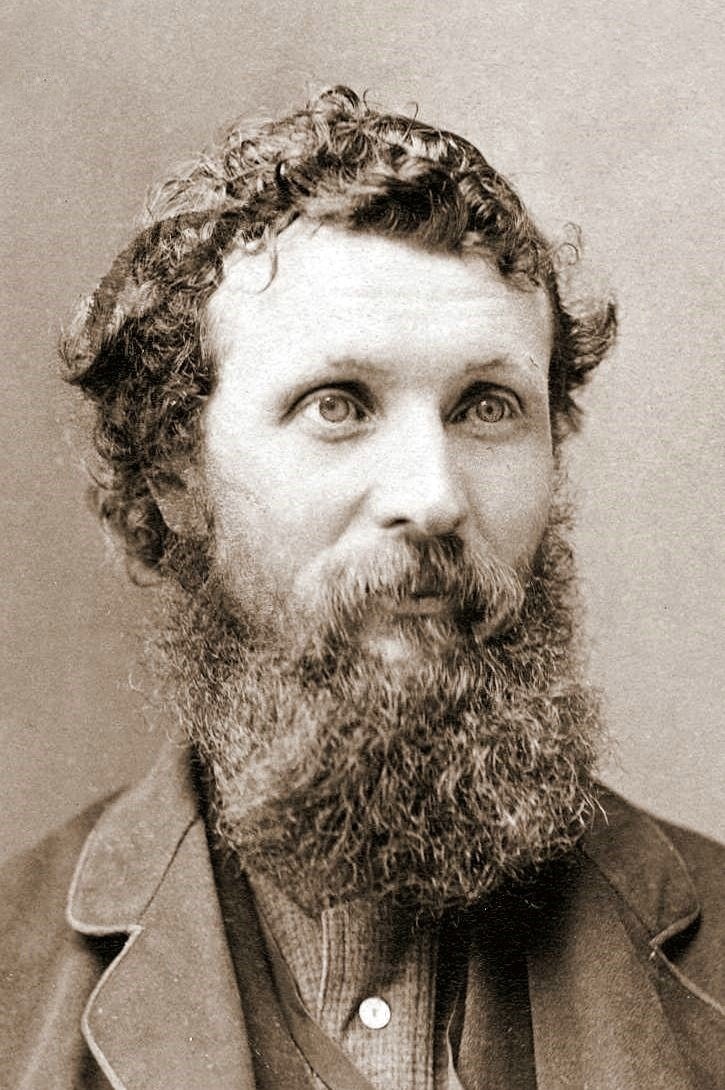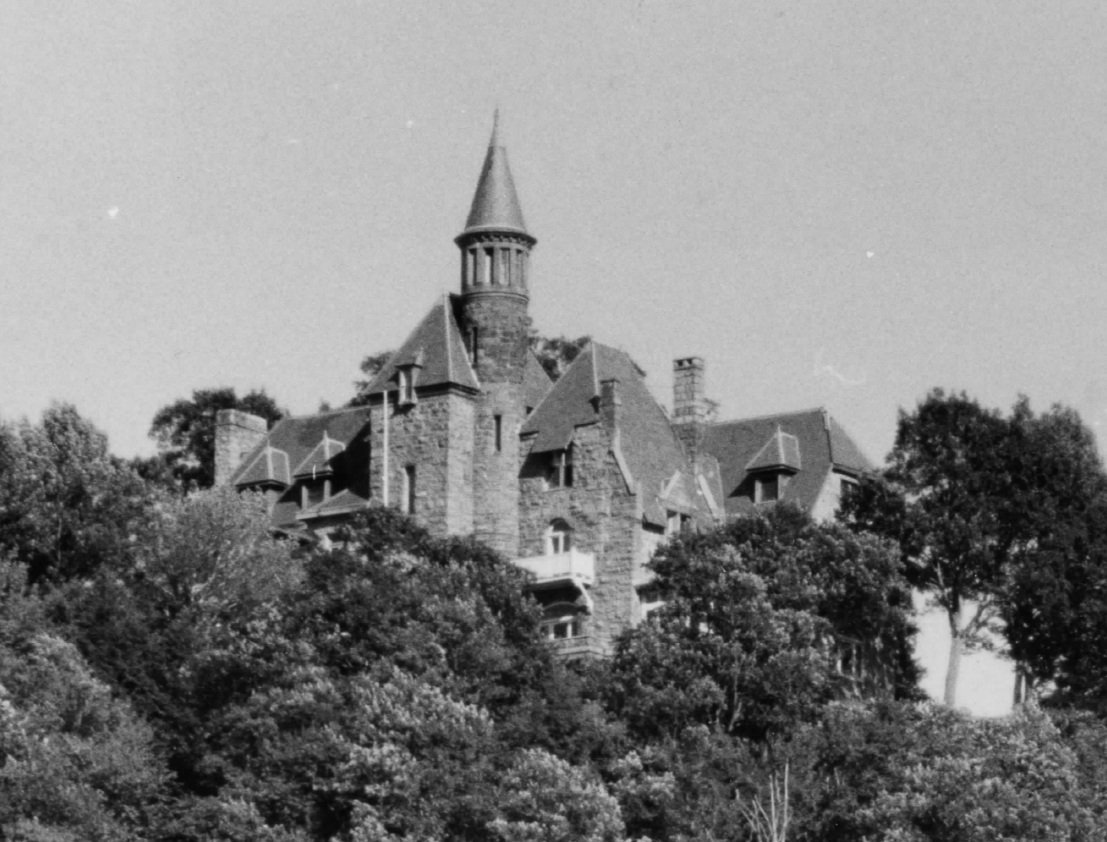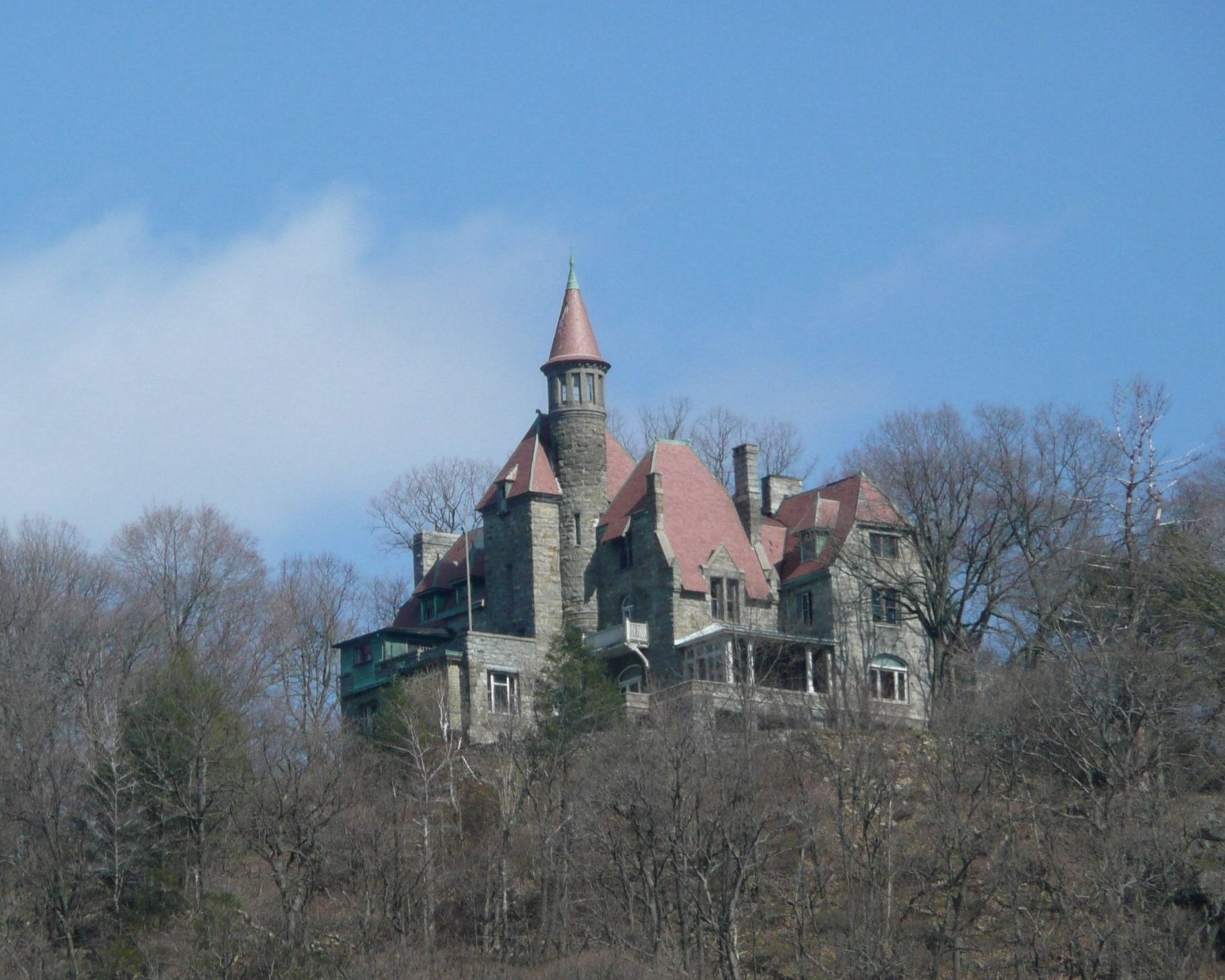ENVIRONMENTAL ICON JOHN MUIR’S SECRET WHITE SUPREMACIST CABIN: 1 OF 2
JOHN MUIR SAID HE SHARED 'IMMORTAL SOUL SYMPATHY' WITH WHITE SUPRMACIST HENRY FAIRFIELD OSBORN. OSBORN’S MOUNTAIN-TOP CASTLE COMPOUND IN NEW YORK’S HUDSON VALLEY SHELTERED MUIR WHILE HE WROTE TWO BOOKS. IT ALSO HELPED SPAWN HITLER AND NAZI GERMANY.
Woodsome Lodge, Castle Rock, Garrison, New York. John Muir, the iconic Naturalist who founded the Sierra Club, wrote two books in this cabin shortly before his death, according to the white supremacist who owned it and was his close friend, Henry Fairfield Osborn. Photo Credit: JB Nicholas.
THE FREE LANCE NEEDS YOUR DONATIONS TO SURVIVE. DONATE HERE.
A mountaintop cabin just outside New York City in the historic Hudson Valley sheds new light on the relationship between John Muir, the celebrated Naturalist who founded the Sierra Club, and a white supremacist whose writings fueled Hitler's rise to power in Germany.
"Immortal soul sympathy," are the words Muir himself used to describe his relationship with the white supremacist, Henry Fairfield Osborn.
The existence of the cabin is reported here for the first time.
The fallout from the 2020 murder of African-American George Floyd by police in St. Paul, Minnesota claimed Muir and the God-like place he previously held in the Parthenon of American conservation icons. Muir, for example, wrote "The clearest way into the Universe is through a forest wilderness," but he also once wrote blacks were "sambos"-a racial fighting word akin to the N-word.
Muir was disowned by the Sierra Club, the group he created, July 22, 2020-two months after Floyd's murder. At the time, totems of white supremacy like Confederate statues were falling around the Nation in response to Floyd's murder and the rise of the Black Lives Matter movement. That’s when the Sierra Club's president published a public statement confronting Muir's use of hurtful language.
Muir "made derogatory comments about Black people and Indigenous peoples that drew on deeply harmful racist stereotypes," the statement said. He also "maintained friendships with people like Henry Fairfield Osborn, who worked for both the conservation of nature and the conservation of the white race."
That’s putting it politely. Osborn worked so hard for “conservation of the white race” Hitler’s Nazi Germany gave him an award-that he accepted, in person.
The Sierra Club stopped short of calling Muir a racist because, the statement said, Muir's "views evolved later in his life."
Reporters and editors at the Washington Post did not show similar restraint. They libeled Muir as a "racist."
Three Sierra Club board members including two black ones fired back at the Washington Post and at the president of their own group: "recent media inaccurately represents Muir as a racist."
That caused the Sierra Club President who issued the first statement condemning Muir to quit.
John Muir by Carleton Watkins, c. 1875. Photo courtesy of University of the Pacific
I literally hiked into this controversy, by chance.
I was traveling through the Hudson Highlands 60 miles north of New York City when I encountered a local resident enjoying a hike through the same public forest land I was enjoying a hike through. We were traveling companions, for the same short stretch of trail. He figured I'd heard of Muir and of course he was right.
The Sierra Club president had recently published the group's official mea culpa on Muir. My new hiking partner had been following the news closely. That was partly because he was an outdoors person. It was also because the Osborn family built and lived in a Rhenish castle on top of a nearby hill called Castle Rock for almost a century-it was less than a mile away from where we were.
Henry Fairfield lived at Castle Rock while he was friends with Muir. Muir visited him and stayed for months at Castle Rock in a long-forgotten cabin next to the Osborn castle, my new hiking partner said. He even wrote a few of his books there. When they weren't writing, Muir parlayed with Osborn on subjects near and dear to them, including eugenics, he joked.
The castle, and the cabin, were still there, he added.
I knew about Castle Rock, but I didn't know about Muir's connection to it. Was there really a long-forgotten East Coast John Muir cabin? How could that be, especially since Muir's West Coast home is a celebrated shrine maintained by the National Park Service-with taxpayer dollars? Naturally I was curious. I decided to investigate. Here’s what I found.
Henry Fairfield Osborn's father was a Gilded Age robber baron named William Henry Osborn. William Henry was born on a farm in Salem, Massachusetts. He transcended this modest beginning to become a railroad tycoon-president of the Illinois Central Railroad in 1855. He and artist Frederic Edwin Church were childhood friends. The successful Capitalist owned many of Church’s paintings and named his other son, William Church, after the artist.
Inspired by Church’s treasured mountaintop masterpiece art-house mansion, Olana, Osborn purchased land with a high hill along the Hudson River in Garrison, opposite the United States Military Academy at West Point. He completed construction of a Rhenish castle on top of the 650-foot tall hill in 1881. Osborn called his home “Castle Rock.”
Castle Rock was constructed of rough-cut, locally-procured stones locked together with mortar. It is three stories tall with 30-plus rooms, four interior chimneys and numerous fireplaces. There are six main bedrooms, each with a fireplace and a “bath”-but no modern plumbing. The castle’s steeply sloped Gothic roofs are sheathed in red slate. A round, stone turret with tall, slender windows topped with a tall cone rises from its center. Dormers stud the roof. Porches face west and south.
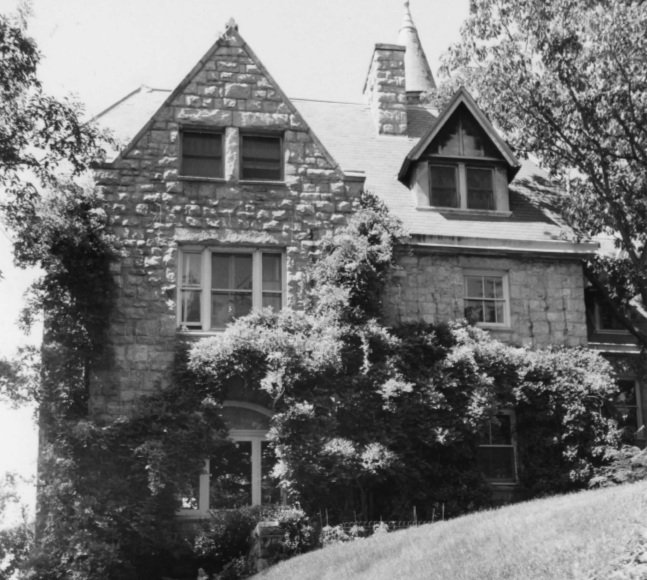
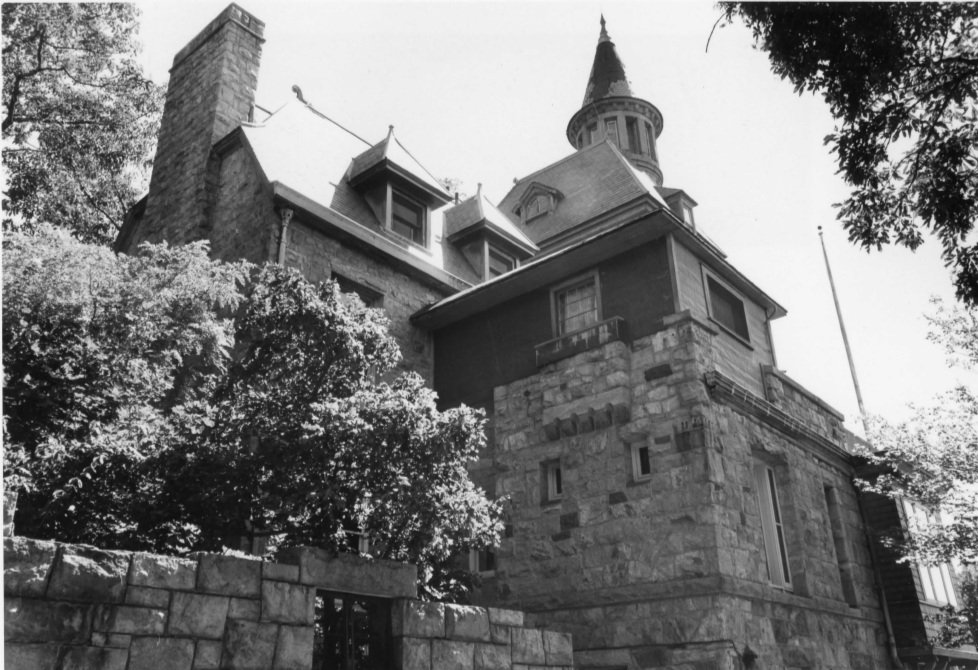
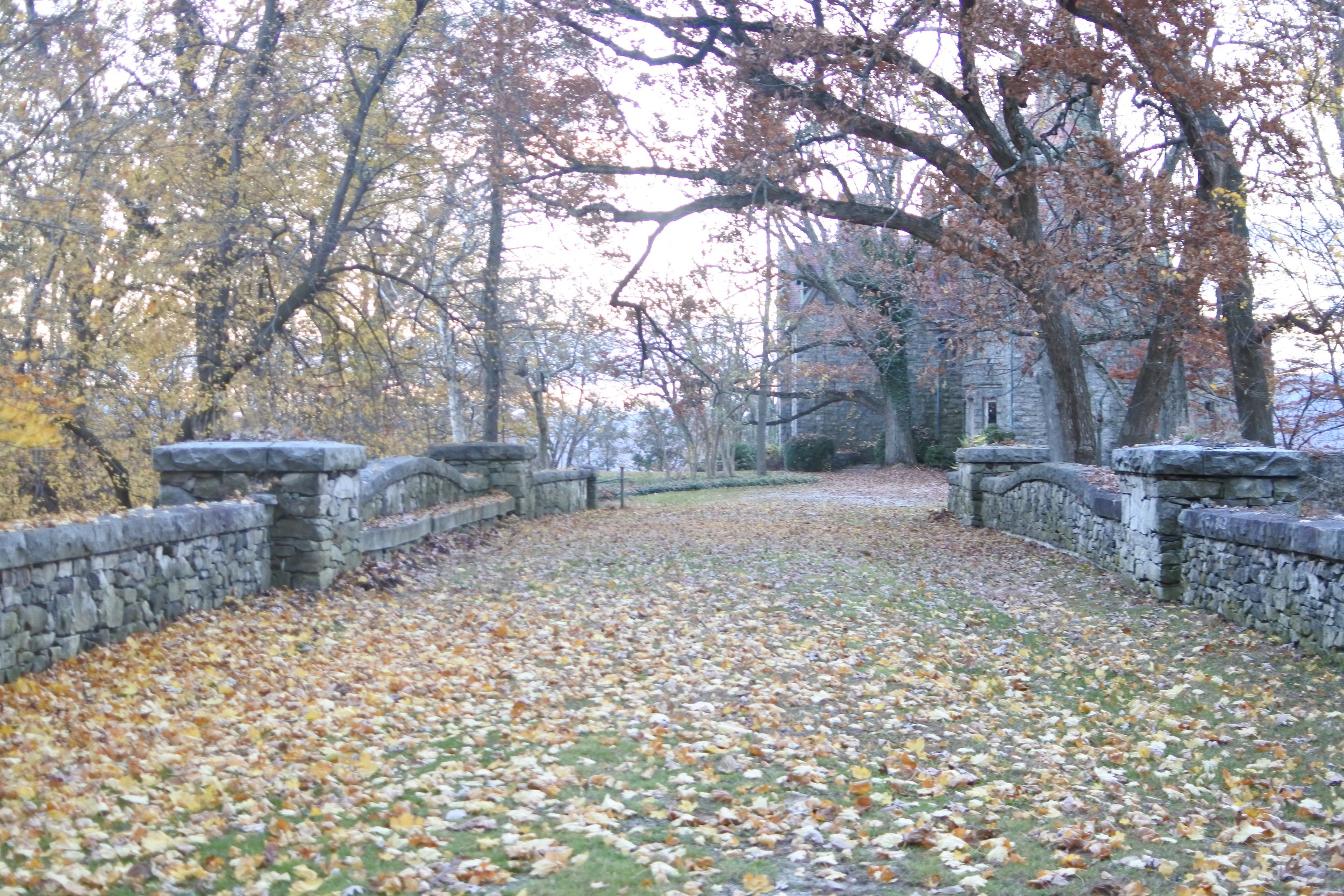

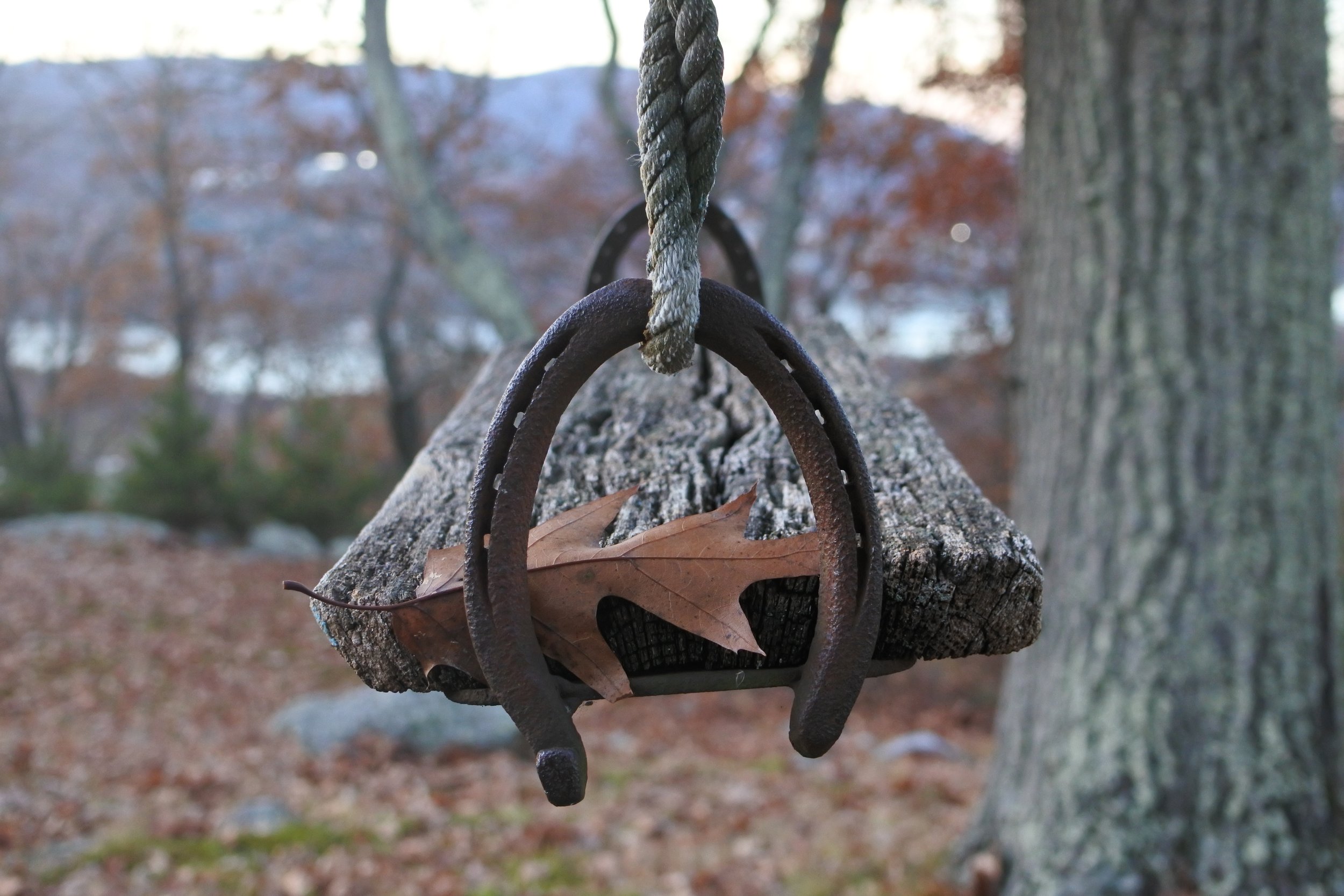
Henry Fairfield was William Henry’s first son. He inherited Castle Rock when William Henry died in 1894. He added a library and expanded the living space to accommodate his wife, Lucretia, and their two children. (A third died in its first year.)
Henry Fairfield was a zoologist, paleontologist, Columbia University professor, president of the New York Zoological Society, 1909-1925, and president of the American Museum of Natural History, 1908-1933. Before he was president of the museum, he was its chief paleontologist. His main task was to add to the museum's skeleton collections. He is widely considered one of history’s most prolific bone collectors. He assembled the largest and most complete fossil collection in the world. He named Tyrannosaurus Rex and Velicoraptor.
Osborn also revolutionized the way museums display their holdings by popularizing large-scale, diorama-like displays and towering assembled skeletons.
Osborn's team included Roy Chapman Andrews, likely the real-life, fedora-wearing, pistol-packing prototype for Harrison Ford’s character in the wildly-popular “Indiana Jones” adventure movies.
Roy Chapman Andrews by James B. Shackelford via Roy Chapman Andrews Society.
In his day, Osborn, “was second only to Albert Einstein as the most popular and well-known scientist in America,” Brian Regal writes in Henry Fairfield Osborn: Race and the Search for the Origins of Man. “Because of his public profile, Osborn's pronouncements on science, education and the state of society were taken as authoritative by many.”
Henry Fairfield Osborn was also a white supremacist, eugenicist and anti-immigration advocate.
He wrote that American losses in life and treasure during World War I were worth it because the intelligence tests developed to evaluate military recruits showed that different “races” of people had different innate intelligence:
I believe those tests were worth what the war cost, even in human life, if they served to show clearly to our people the lack of intelligence in our country, and the degrees of intelligence in different races who are coming to us, in a way which no one can say is the result of prejudice .... We have learned once and for all that the negro is not like us. So in regard to many races and subraces in Europe we learned some which we had believed possessed of an order of intelligence perhaps superior to ours [read Jews] were far inferior,
as quoted by evolutionary biologist Stephen Jay Gould in The Measure of Man, bracketed words Gould's.
Osborn lobbied lawmakers to approve legislation severely crimping lawful immigration. He supported both the Emergency Quota Act of 1921 and the Immigration Act of 1924. The latter banned all immigration from Asia and the Middle East. It also established meager quotas for the number of migrants from Europe and appropriated funds for establishing enforcement mechanisms-including a new federal police force called the U.S. Border Patrol.
It's tough to single out any one of his odious ideas as worse than the rest but one thing he did does stand alone in infamy.
Osborn endorsed Madison Grant’s 1916 book, The Passing of the Great Race: or the Racial Basis of European History. He penned prefaces for its second (1918) and fourth editions (1921). Grant’s book argued for preservation of America as a “civilization preserve” for whites. Only Anglo-Saxons and other Nordics from north-western Europe should be allowed entry. Portions of Grant’s book repeated points made by Osborn in his 1915 book, Men of the Old Stone Age.
Henry Fairfield Osborn by Evanston Fowler via Wikipedia.
Grant’s book is “a pseudo-scientific work of white supremacism that warns of the decline of the 'Nordic' peoples," The New Yorker magazine reported in 2015. It popularized ideas first published by Henry Fair Field Osborn. Osborn wrote prefaces for the book’s second and fourth editions.
Adolph Hitler, the German Nazi leader who directed a campaign of genocide against Jews and other disfavored minorities, read The Passing of the Great Race while serving time in Landsberg prison. Hitler was doing a five-year stretch for participating in a failed coup known as the “Beer Hall Putsch” in 1923. Hitler wrote Grant fan mail from prison and called The Passing of the Great Race “his bible.”
After his release from prison, Hitler quoted from it in his speeches. He used it to fuel his rise to power.
After Hitler was appointed German Chancellor in 1933, Johann Wolfgang von Goethe University in Frankfurt awarded Grant’s mentor, Henry Fairfield Osborn, an honorary doctorate in 1934. Osborn traveled to Germany to receive it in person. Degree in hand, Osborn toured Hitler’s Germany. He was impressed by what he saw. He “said prophetically that observing the youth of Germany was ‘to realize that the world will have much to deal with in the not too distant future’ because of them,” according to Regal.
The following November the German journal Natur Und Volk celebrated Osborn's work. The article ended with a long quote from Osborn that showered praise on Germany. Germany was “misunderstood by the world and that he would personally do his best ‘to correct unfavorable impressions that now prevail,’” Osborn said.
He died a year later in 1935.
Crowd cheers Hitler on his inauguration as German chancellor, 1933. Photo Credit: Bundesarchiv, Bild via Wikipedia.
After the allies won World War Two in 1945, they organized a series of military war crime tribunals for Nazi leaders known as the Nuremberg Trials. Dr. Karl Brandt, Hitler's personal physician and nominal head of the Nazi euthanasia program, code-named Aktion T4, was among those charged in the first Nazi Doctors’ Trial. As part of his defense, Brandt introduced into evidence passages from Grant's Passing of the Great Race.
The first excerpt Brandt submitted in his defense was a selection from Osborn’s introduction. Brandt’s point was that radical eugenics, such as that he allegedly practiced at Hitler’s command, was not ideologically unique or original to Nazi Germany. It was American, like apple pie.
Brandt was convicted, along with 15 others, of being responsible for gruesome human experiments and mass murder.
Sentenced to death, Brandt kept blaming America. Standing on the scaffold about to be hung, Brandt mused “How can the nation which holds the lead in human experimentation, how can that nation dare" and so on and so forth-for several minutes. Brandt would not shut up. He kept talking. He actually tried to filibuster death.
His conviction was “nothing but political revenge,” he kept on. “It is no shame to stand on this scaffold."
Brandt tried to keep talking, but the hangman heard enough.
Brandt “refused to end his speech, and finally the black hood was dropped over in mid-sentence. He was 43,” reports Alexander Mitscherlich and Fred Mielke in “Seven Were Hanged,” the epilogue to The Nazi Doctors and the Nuremberg Code, 1992.
The road to Nazi Germany was paved with ideas Henry Fairfield Osborn armed with the imprimatur of science. Ideas he popularized from his writing desk at Castle Rock, on the Hudson River, across from West Point, 50 some miles north of New York City, while his pal, John Muir, penned loving screeds to sacred nature in his guest house next door.
Still, by the time Osborn really went over to the dark side, Muir was long dead.
Naturalist icon John Burroughs, right, and Charles Keeler visit John Muir's grave sometime after his 1914 death and Burrough’’s death in 1921. Photo credit: National Park Service.
TO BE CONTINUED
THE FREE LANCE NEEDS YOUR DONATIONS TO SURVIVE. DONATE HERE.
